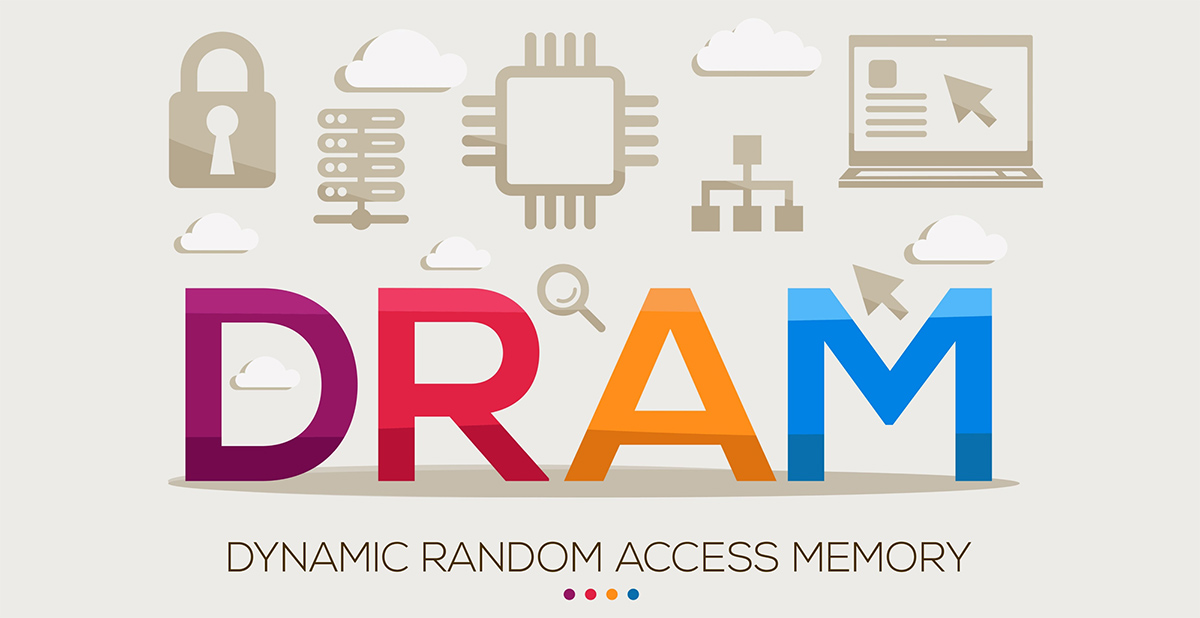DRAM: How to Pick the Right Embedded Memory

In the rapidly evolving electronics landscape, choosing the appropriate Dynamic Random Access Memory (DRAM) is crucial for optimizing performance and meeting project requirements. Engineers and procurement specialists play a pivotal role in this process, ensuring that the selected DRAM aligns with technical specifications, budget constraints, and future scalability. In this blog post, we summarize insights and strategies for navigating the complexities of DRAM selection depending on the application.
Selection criteria
DRAM serves as the primary volatile memory in electronic equipment, providing high-speed data storage and access. Key considerations include speed, capacity, voltage requirements, and form factor compatibility with existing systems. Performance metrics such as bandwidth, latency, and refresh rates depend on the technical specifications required for the intended application. Factors like power consumption, temperature tolerance, and compatibility with other components are taken into consideration to ensure seamless integration and optimal performance.
Several types of DRAM are available, each offering unique advantages and trade-offs. Common variants include DDR (Double Data Rate) and LPDDR (Low Power DDR). DDR variants cater to general-purpose computing needs, while LPDDR focuses on power efficiency for mobile devices. From DDR2 to DDR5, capacity and speed increase with each generation of DDR. However, more capacity and higher speed are not always better depending on the application.
The temperature grade determines under what conditions the memory components are stable. For example, commercial grade and industrial grade DDR devices might have the same density, speed, and form factor but won’t operate equally reliably at high or low temperatures. Commercial grade DRAM is graded for 0°C to 85°C and industrial grade for -40°C to +95°C. Automotive (Wide) temperature grade is stable in an even wider range: from -40°C to +105°C. The application's exact requirements and budget constraints determine the choice. Separate from temperature range grading, components for automotive applications can also be specifically tested for integration in various systems. SMART’s automotive devices meet the AEC Q-100 Class 2 specification for in-passenger cabin equipment.
Component selection
Collaboration between engineers and procurement specialists is essential to streamline the DRAM procurement process. Procurement teams should leverage their industry expertise to source DRAM from reliable suppliers, like SMARTsemi, that offer competitive pricing and quality assurance. By prioritizing suppliers with a track record of delivering on time and providing excellent customer support, project risks decrease and smooth operations are ensured.
Keeping the future in mind
It is important to anticipate future needs and technological advancements when selecting DRAM components. In order to extend the lifespan of a product, it is best practice to opt for solutions that offer scalability and compatibility with evolving standards and source from a supplier who provides long-term component availability. Factors like backward compatibility, support for emerging technologies, and future-proofing strategies mitigate the risk of obsolescence and facilitate future upgrades.
Choosing the right DRAM memory requires a comprehensive understanding of technical requirements, careful evaluation of available options, and effective collaboration between engineers, procurement specialists, and suppliers. Understanding the needs in terms of performance metrics (bandwidth, latency), power consumption, and environmental conditions will help narrow down the options and ensure compatibility with existing hardware and software. By prioritizing performance, reliability, and scalability, organizations can make informed decisions that drive innovation and ensure success regardless of the application.
SMARTsemi is your supply chain partner for DRAM components, eMMC solutions, and SD/microSD Flash Memory Cards for long-life applications. With 20+ years of industry experience, we understand your challenges and have aligned our priorities with yours to simplify your memory chip supply chain for the long run. We know what you need before you need it. Get a jump start and request a sample today.






